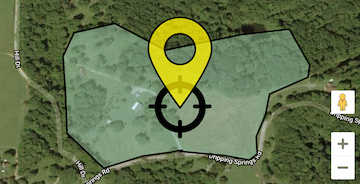Crimson Clover

By Kent Kammermeyer, Senior Wildlife Biologist
Crimson clover may be the most popular annual clover planted for deer in the entire U.S. Like many other clovers, crimson originated in the Mediterranean region. It is an important and colorful winter annual legume in the South and the Pacific coast, where winters are mild. It is commonly seen growing in Southeastern interstate highway medians where its spectacular red bloom is the talk of the motorist in mid-spring. It is also grown in some northern states as a winter or a summer annual. It has been used for a cover crop as far North as northern Maine. Do not confuse this plant with the perennial red clover. Crimson leaves have a more rounded tip and both stem and leaves have more hair than red clover. Crimson plants have dark green leaves and grow to a height of 1-3 feet. Brilliant crimson flowers with long heads mature from top to bottom. Seed is rounded, yellow and about 3 times larger than most other clovers.
Establishment/MixturesAs with other agricultural crops, there is no substitute for an accurate soil test. Although crimson is more acid tolerant than other clovers, (pH range of 5.5-6.4), it will still require liming at many sites and soil types throughout the U.S. Crimson should be inoculated with the proper strain of Rhizobium bacteria just before planting. Note that this is a different strain of bacteria than that required by any other clovers or alfalfa. Carefully follow the instructions for inoculating seed, as poor inoculation is one of the greatest causes of crimson clover failure in new plantings. Rapid fall growth is enhanced by planting on a firm, well-prepared seed bed by broadcasting, then cultipacking or drilling with a grain drill. Seed should be covered no more than one-fourth inch deep. Normal seeding rate is 20 lbs/acre in pure stands and 12 to 15 lbs/acre in mixture with cool season grasses. Planting dates are August thru October in the South and March in the North. It will not do well in extreme heat or cold.
Phosphate and potash are the most important fertilizer elements required by crimson, but micronutrients and sulfur can also be limiting. Nitrogen applied at planting is probably beneficial in total production especially when crimson is grown in association with annual or perennial grasses. Consequently (in lieu of a soil test), fertilizer at planting time may be estimated at 300 lbs/acre of 8-24-24 for a pure stand or 300 lbs/acre of 19-19-19 for a mixed stand.
Crimson can be mixed with rye, wheat or oats if rates of these small grains are held at about 50 lbs/acre. Ryegrass (15 lbs/acre) is a good companion for a mix which will reseed the following September. However, the aggressive nature and heavy reseeding of the ryegrass will eventually choke out the crimson. Adding arrowleaf clover (10 lbs/acre) to any of the above mixes adds variety and longevity to the mix in the South where winter low temperatures remain above 10oF.
ManagementThe only drawback to crimson clover for deer is that it is a relatively short season annual which produces well from November through April (excluding mid-winter) in the South and April through June in the North. However, the wildlife manager can take advantage of this short season in several ways, especially in the South. Crimson can be plowed under before planting a summer crop of grain sorghum, corn, pearl millet or any grass, which can then use the nitrogen fixed by the clover. Using minimum tillage, these same crops can be planted into crimson clover sod killed or partially killed by herbicides. The crimson left as mulch for a summer crop provides up to 70 lbs/acre nitrogen for use by grain sorghum or corn.
In the South, crimson can successfully reseed in September for several successive years by mowing in late August followed by light disking or even no disking, depending on soil conditions (usually heavy clay soil requires no disking, sandy requires disking). This works well (at least temporarily) when mixed with ryegrass, which will do the same thing. Check with your local wildlife biologist or county Extension Agent to determine if crimson is adapted to your area and will reseed without disking.
Crimson clover for deer is a cheap, easy, high quality, productive, palatable cool season forage for deer. It starts fast, withstands heavy continuous grazing and produces a consistent, heavy seed crop with good reseeding potential. Dixie reseeding crimson clover is an important component of many of Pennington's Rackmaster Wildlife Seed mixtures.
